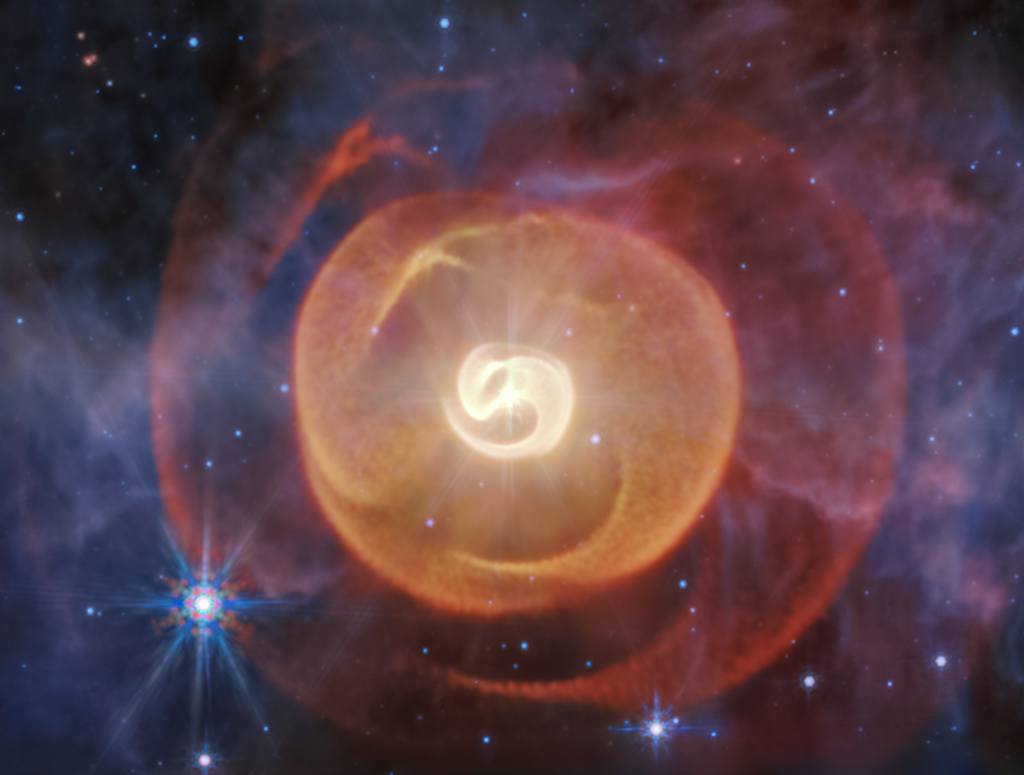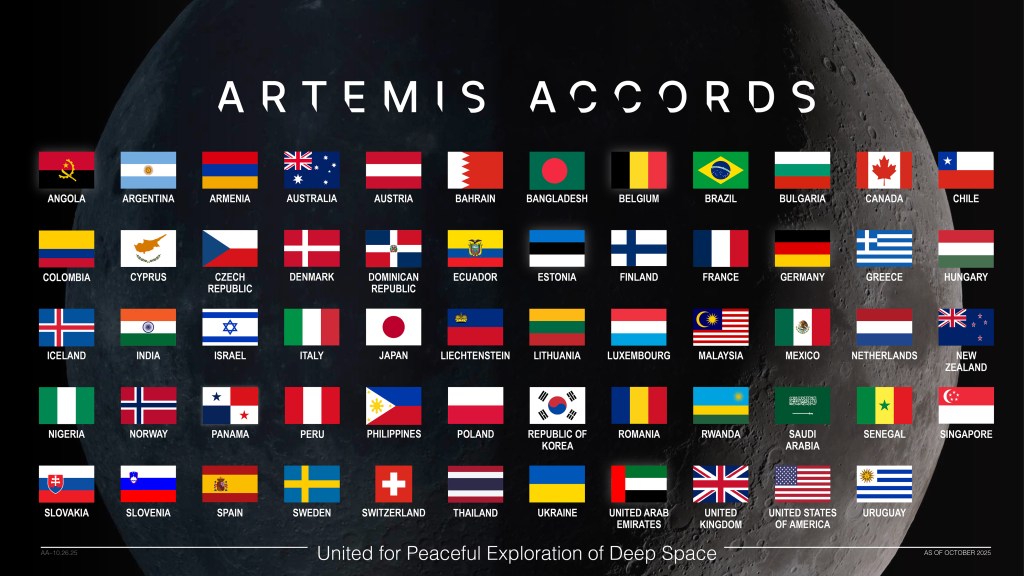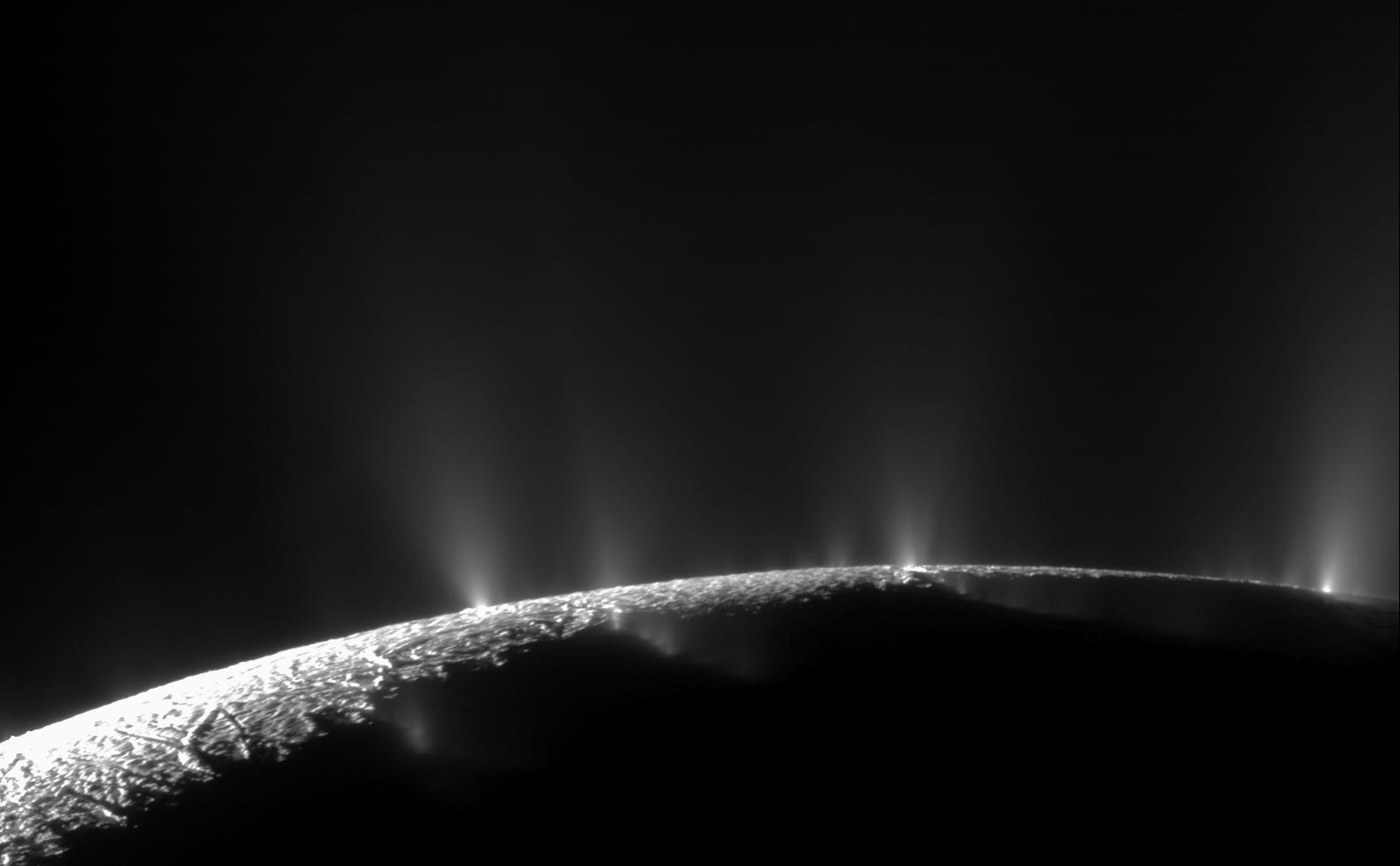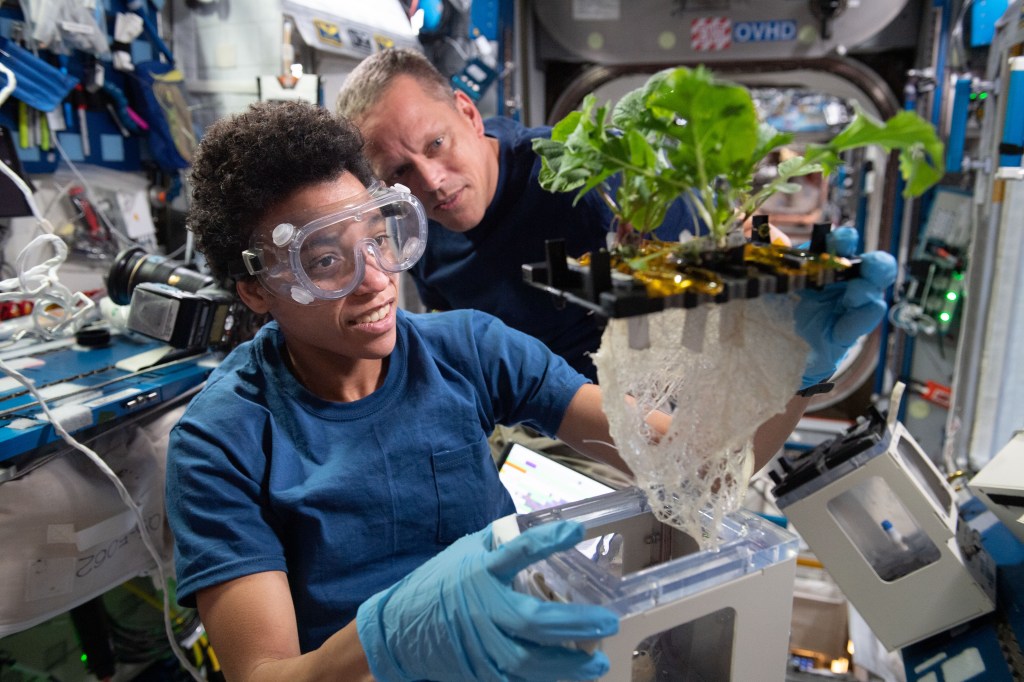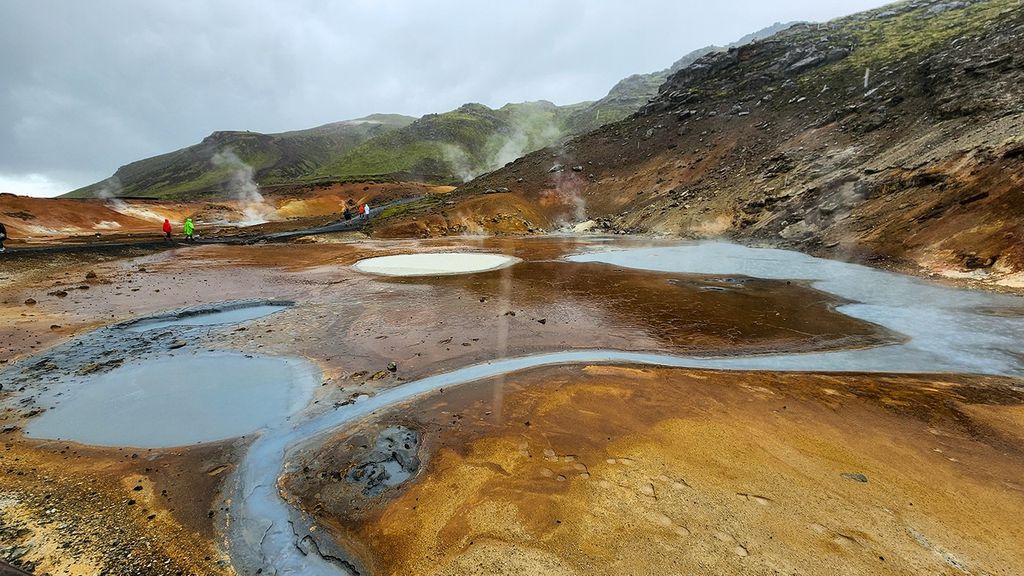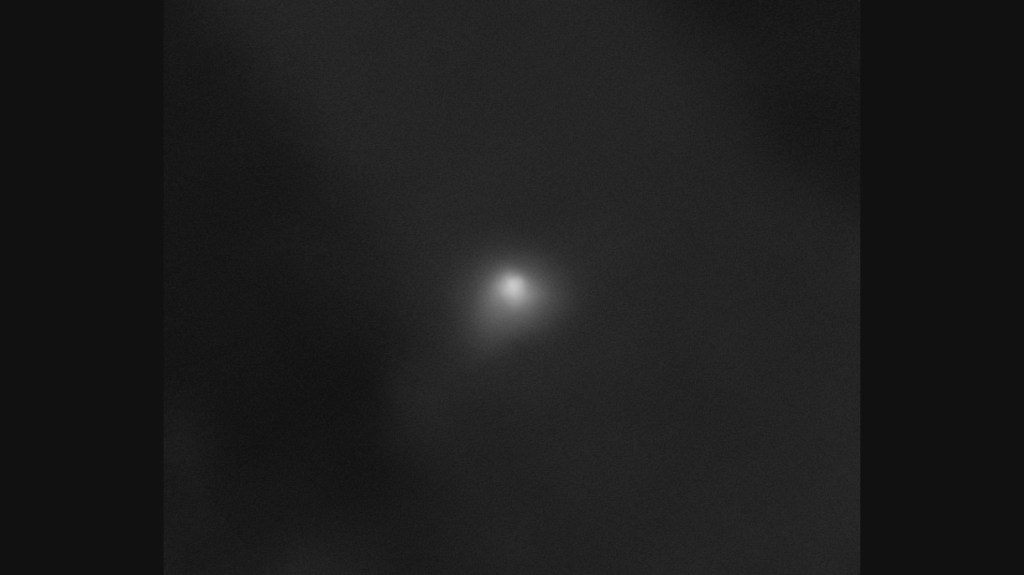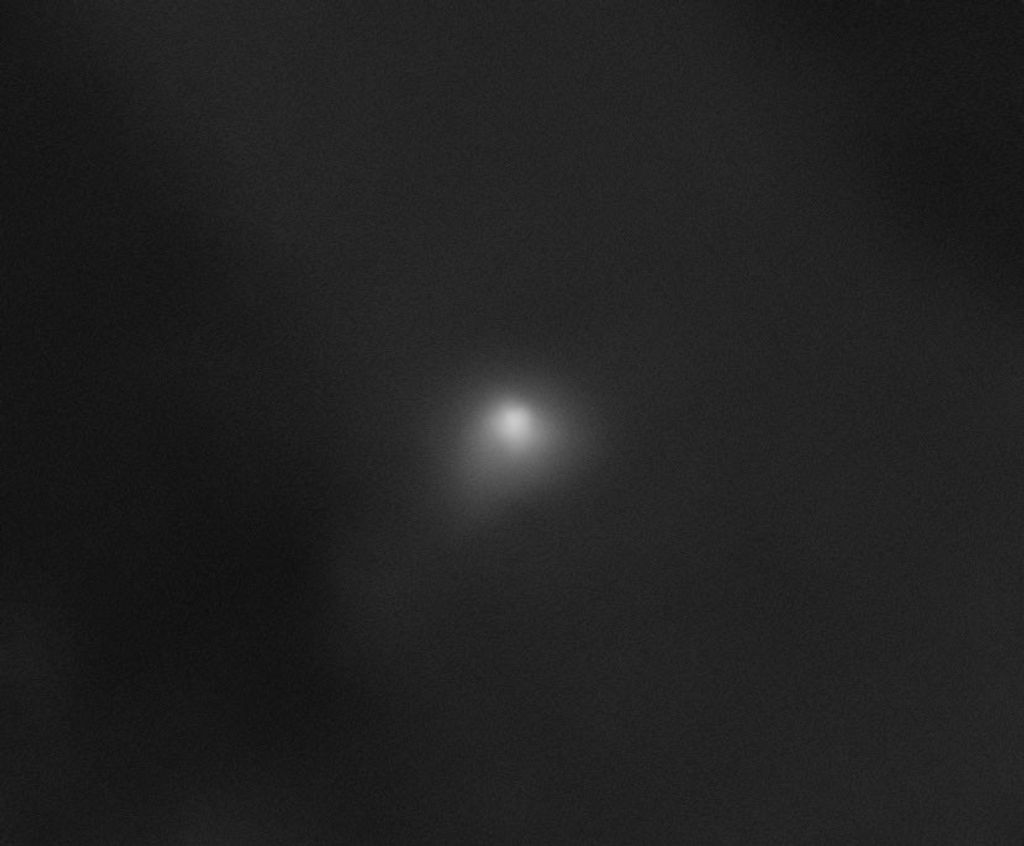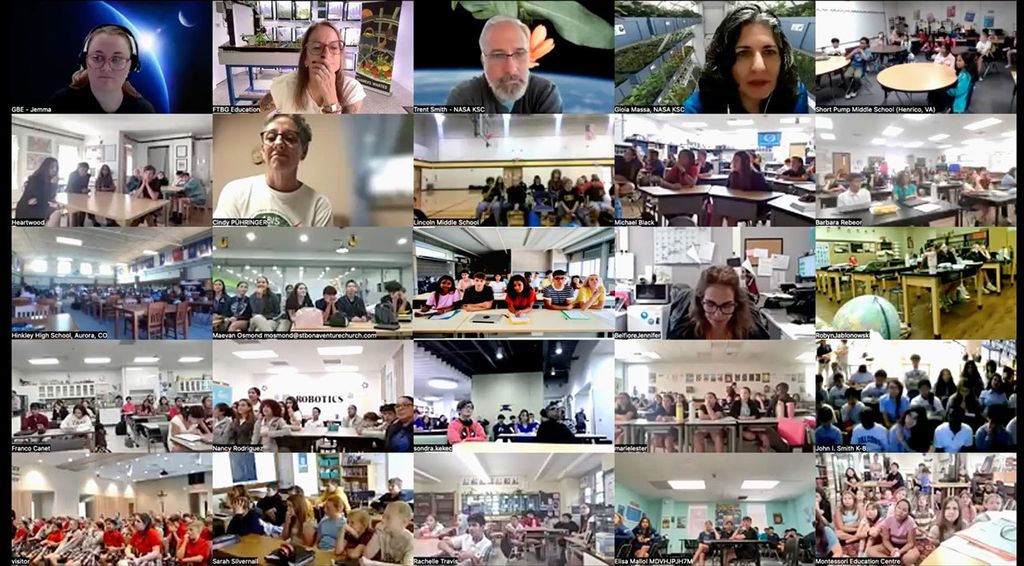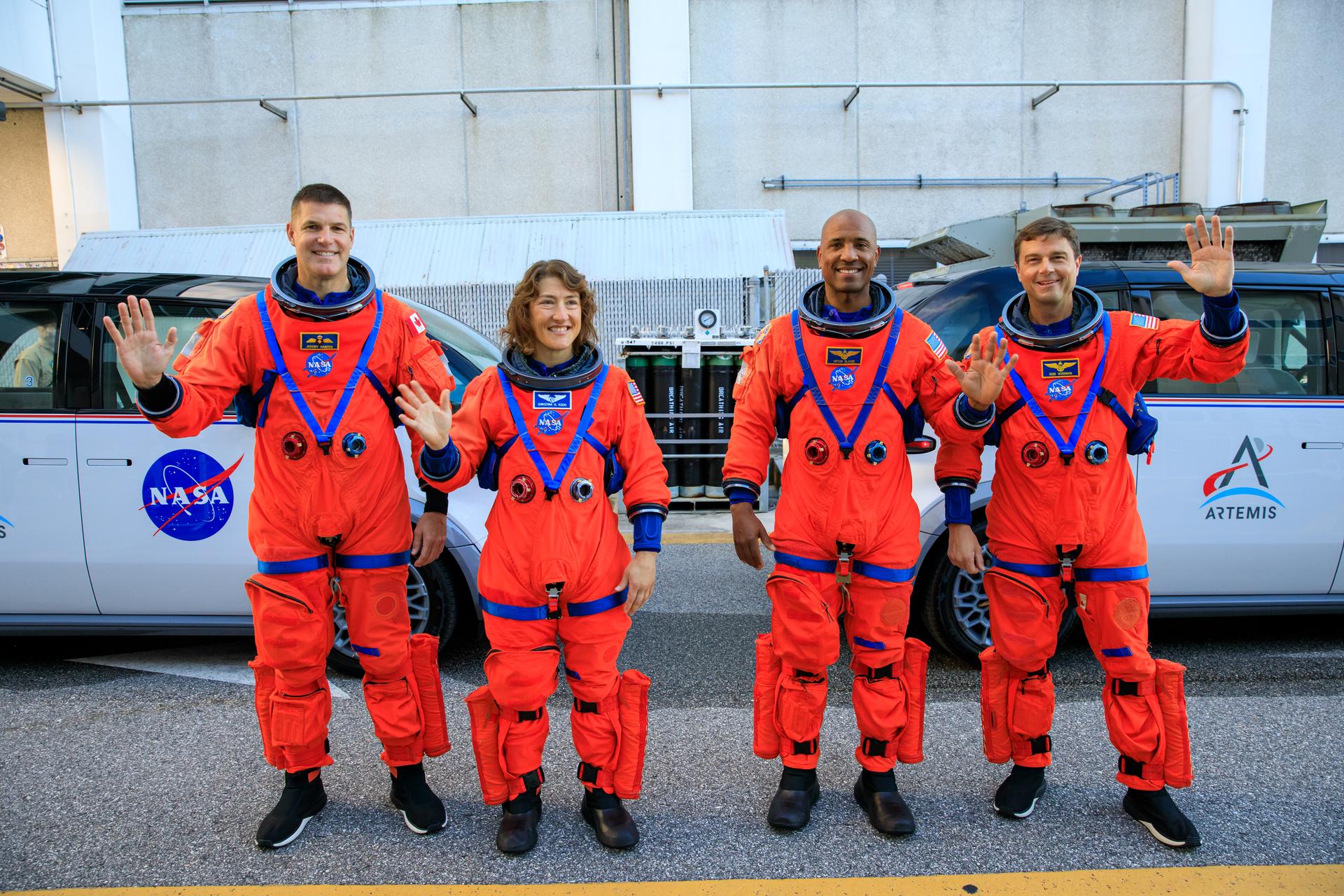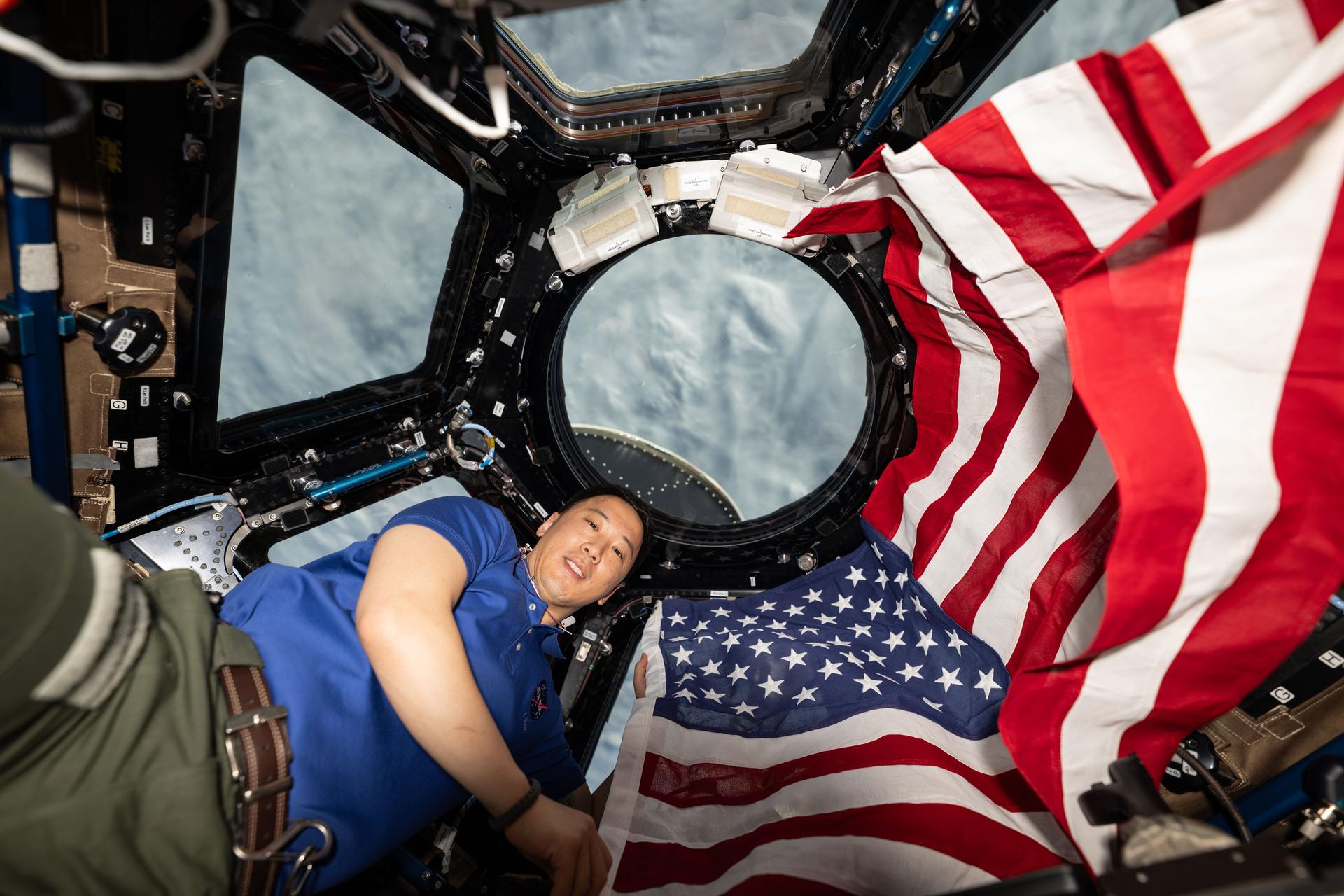1 min read
Two Views of the Gas in the Southern Ring Nebula (NIRCam and MIRI Composite Images)
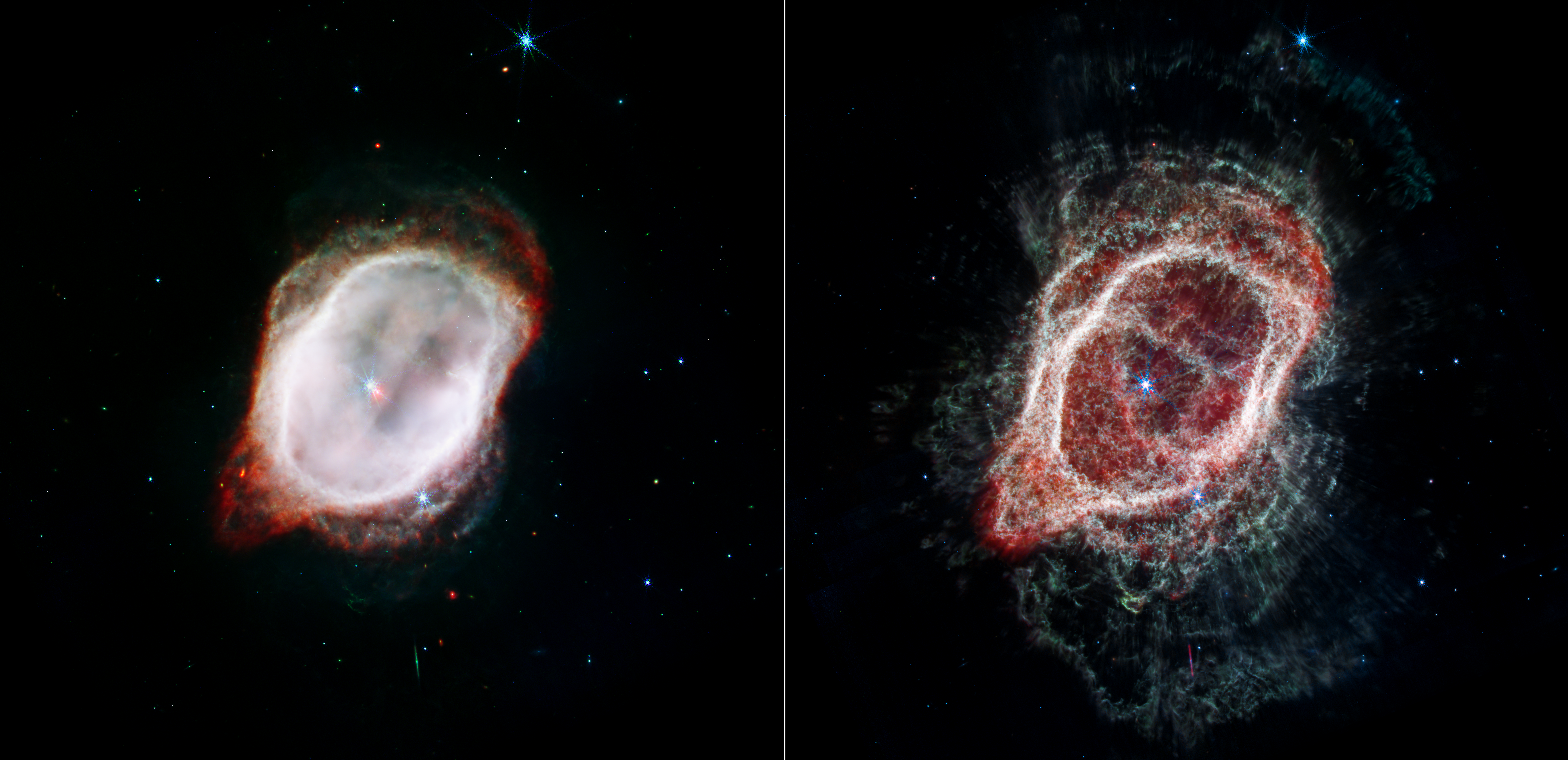
The Webb Space Telescope offers dramatically different views of the same scene! Each image combines near- and mid-infrared light from three filters.
At left, Webb’s image of the Southern Ring Nebula highlights the very hot gas that surrounds the central stars. This hot gas is banded by a sharp ring of cooler gas, which appears in both images.
At right, Webb’s image traces the star’s scattered outflows that have reached farther into the cosmos. Most of the molecular gas that lies outside the band of cooler gas is also cold. It is also far clumpier, consisting of dense knots of molecular gas that form a halo around the central stars. “One of the things that drew my attention was the strong difference between the images of the hot ionized gas and the cold molecular gas,” explained Isabel Aleman of Federal University of Itajubá (UNIFEI), Brazil. “The hot gas is very smooth, but the cold gas shows these mini clumps, spikes, and arcs. Webb’s images are very, very rich in detail.”
By accounting for the temperatures and gas contents in both areas, inside and outside the band, and by combining Webb’s data with precise measurements from other observatories, she and the research team were able to create far more accurate models to demonstrate when gas was ejected by the central star (which appears red in the image at left).
What about the third star that is visible at the lower-right edge of the band within the nebula? From Webb’s vantage point, it appears within the scene, but isn’t part of the nebula itself. It’s merely “photobombing” this party.
Extended Description and Image Alt Text
Extended Description
Two views of the same object, the Southern Ring Nebula, are shown side by side. Both feature black backgrounds speckled with a few tiny bright stars and distant galaxies. Both show the planetary nebula as a misshapen oval that is slightly angled from top left to bottom right. At left, the image shows two stars that are almost overlapping at the center. The top left star appears white and the bottom right star appears red. A large almost solid white oval surrounds the central stars. It takes up about a quarter of the view. The edges of this region are irregular. At the top right and bottom left, there are redder areas. Toward the top left and bottom right, the image is a little greener and more transparent.
At right, there is only one star at the center of the planetary nebula. A large translucent pink-and-red irregular oval surrounds the central stars. This approximately matches the size of what’s shown in the image at left. A lot more material extends outward from this region in the right image. It has similar regions that jut out at bottom left. The entire planetary nebula takes up almost half the image. Long green spokes extend all along the right side, and shorter areas of green have been ejected toward the top and top right.
Image Alt Text
Two views of the same object, the Southern Ring Nebula, are shown side by side. Both show the planetary nebula as a misshapen oval that is slightly angled from the top left to the bottom right. At left, the image shows two stars that are almost overlapping at the center, and an almost solid white oval surrounding them. At right, the image shows one star at the center, a large translucent pink-and-red irregular oval, and wavy patterns that extend all around the edges.
About the Object
- R.A. PositionR.A. PositionRight ascension – analogous to longitude – is one component of an object's position.10:06:58.54
- Dec. PositionDec. PositionDeclination – analogous to latitude – is one component of an object's position.-40:26:00
- ConstellationConstellationOne of 88 recognized regions of the celestial sphere in which the object appears.Vela
- DistanceDistanceThe physical distance from Earth to the astronomical object. Distances within our solar system are usually measured in Astronomical Units (AU). Distances between stars are usually measured in light-years. Interstellar distances can also be measured in parsecs.2,000 light-years (590 parsecs)
- DimensionsDimensionsThe physical size of the object or the apparent angle it subtends on the sky.Image is about 2.4 arcmin across (1.4 light-years)
About the Data
- Data DescriptionData DescriptionProposal: A description of the observations, their scientific justification, and the links to the data available in the science archive.
Science Team: The astronomers who planned the observations and analyzed the data. "PI" refers to the Principal Investigator.This image was created with Webb data from proposal 2733 . It is part of Webb Early Release Observations.
The Early Release Observations and associated materials were developed, executed, and compiled by the ERO production team:
Jaclyn Barrientes, Claire Blome, Hannah Braun, Matthew Brown, Margaret Carruthers, Dan Coe, Joseph DePasquale, Nestor Espinoza, Macarena Garcia Marin, Karl Gordon, Alaina Henry, Leah Hustak, Andi James, Ann Jenkins, Anton Koekemoer, Stephanie LaMassa, David Law, Alexandra Lockwood, Amaya Moro-Martin, Susan Mullally, Alyssa Pagan, Dani Player, Klaus Pontoppidan, Charles Proffitt, Christine Pulliam, Leah Ramsay, Swara Ravindranath, Neill Reid, Massimo Robberto, Elena Sabbi, Leonardo Ubeda.
The EROs were also made possible by the foundational efforts and support from the JWST instruments, STScI planning and scheduling, Data Management teams, and Office of Public Outreach.
- InstrumentInstrumentThe science instrument used to produce the data.JWST>NIRCam and MIRI
- Exposure DatesExposure DatesThe date(s) that the telescope made its observations and the total exposure time.3 June 2022
- FiltersFiltersThe camera filters that were used in the science observations.Left image: NIRCam > F187N, F405N; MIRI > F1800W Right image: NIRCam > F212N, F470N; MIRI > F770W
- Object NameObject NameA name or catalog number that astronomers use to identify an astronomical object.Southern Ring Nebula, NGC 3132, Eight-Burst Nebula
- Object DescriptionObject DescriptionThe type of astronomical object.Planetary Nebula
- Release DateDecember 8, 2022
- Science ReleaseNASA’s Webb Indicates Several Stars ‘Stirred Up’ Southern Ring Nebula
- CreditNASA, ESA, CSA, STScI, Orsola De Marco (Macquarie University); Image Processing: Joseph DePasquale (STScI)
Downloads

These images are a composite of separate exposures acquired by the James Webb Space Telescope using the NIRCam and MIRI instruments. Several filters were used to sample narrow and broad wavelength ranges. The color results from assigning different hues (colors) to each monochromatic (grayscale) image associated with an individual filter. In this case, the assigned colors are: Red: F770W and F1800W, Green: F405N and F470N, Blue: F187N and F212N

Related Images & Videos
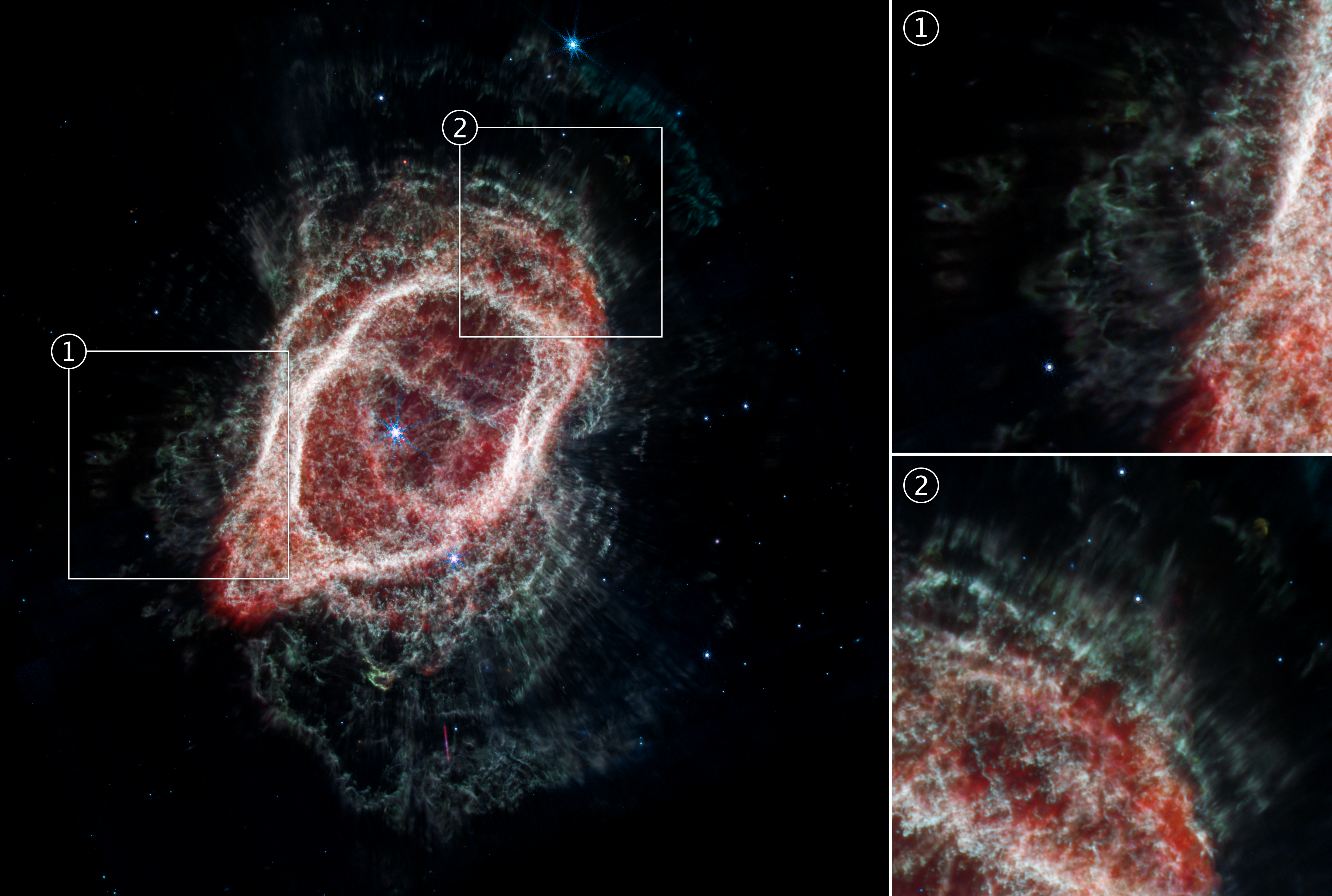
Southern Ring Nebula’s Spokes (NIRCam and MIRI Composite Image)
Examine the straight, brightly-lit lines that pierce through the rings of gas and dust around the edges of the Southern Ring Nebula in the Webb Space Telescope’s image. These “spokes” appear to emanate from one or both of the central stars, marking where light streams through...
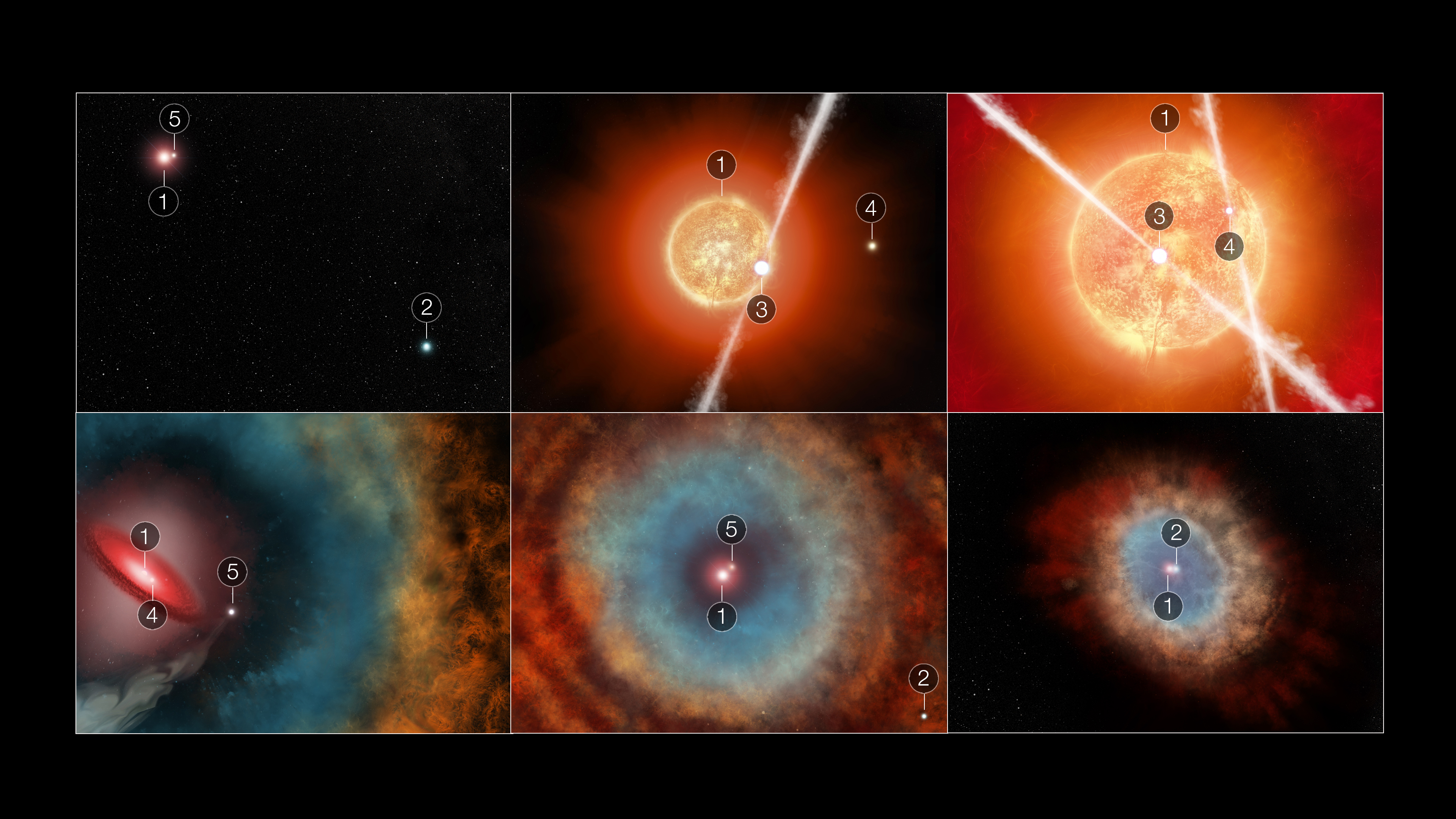
Illustration of Star Interactions in the Southern Ring Nebula
How did all the “partygoers” – up to five stars – create the Southern Ring Nebula? Let’s hit “rewind” and replay the interactions that might have created the scene! First, it’s important to know that none of these illustrations are properly scaled, and three or as many as four...
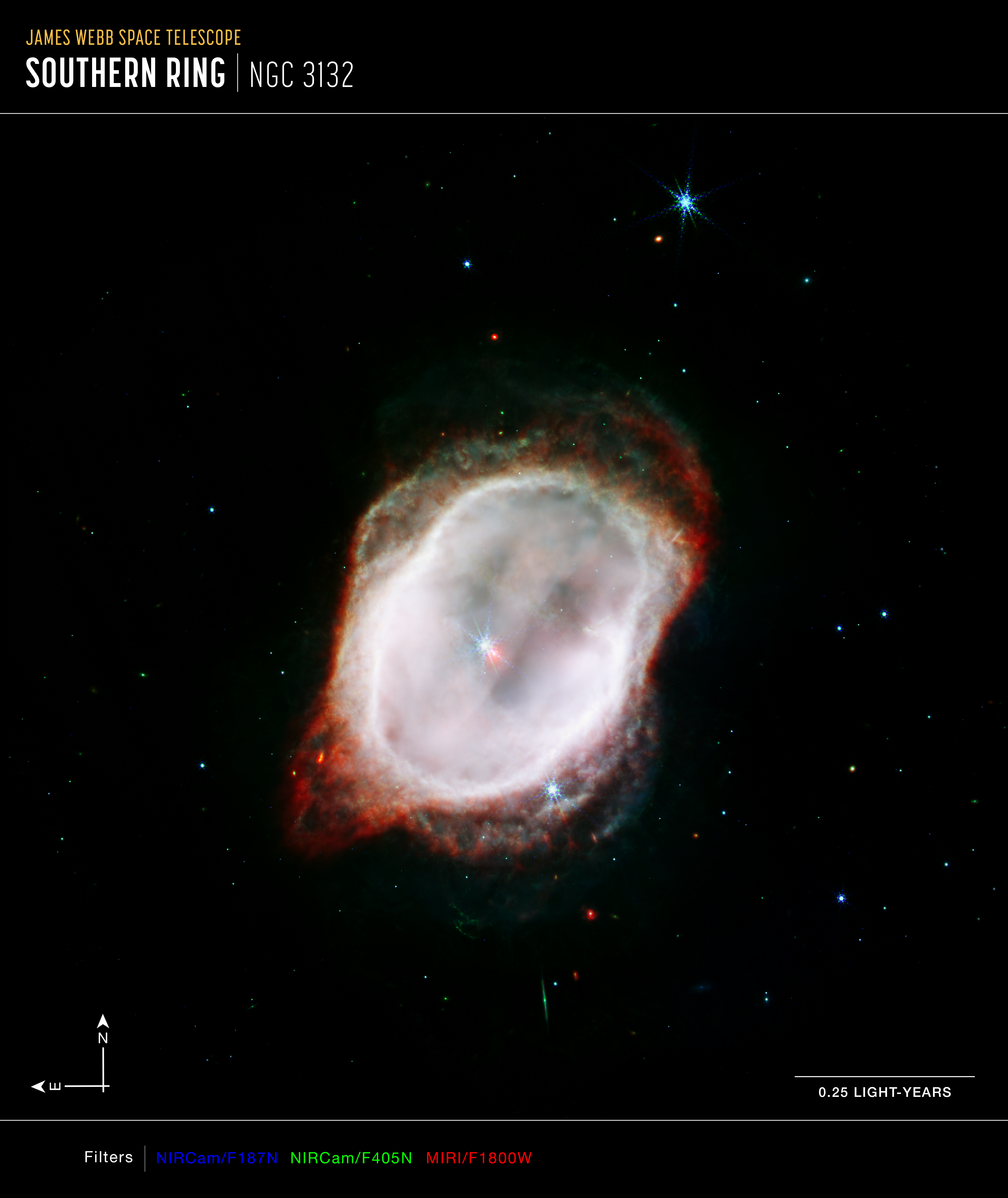
Southern Ring Nebula’s Gas (NIRCam and MIRI Composite Compass Image)
This image of the Southern Ring Nebula (NGC 3132), captured by Webb’s Near-Infrared Camera (NIRCam) and Mid-Infrared Instrument (MIRI), shows compass arrows, scale bar, and color key for reference. The north and east compass arrows show the orientation of the image on the sky....
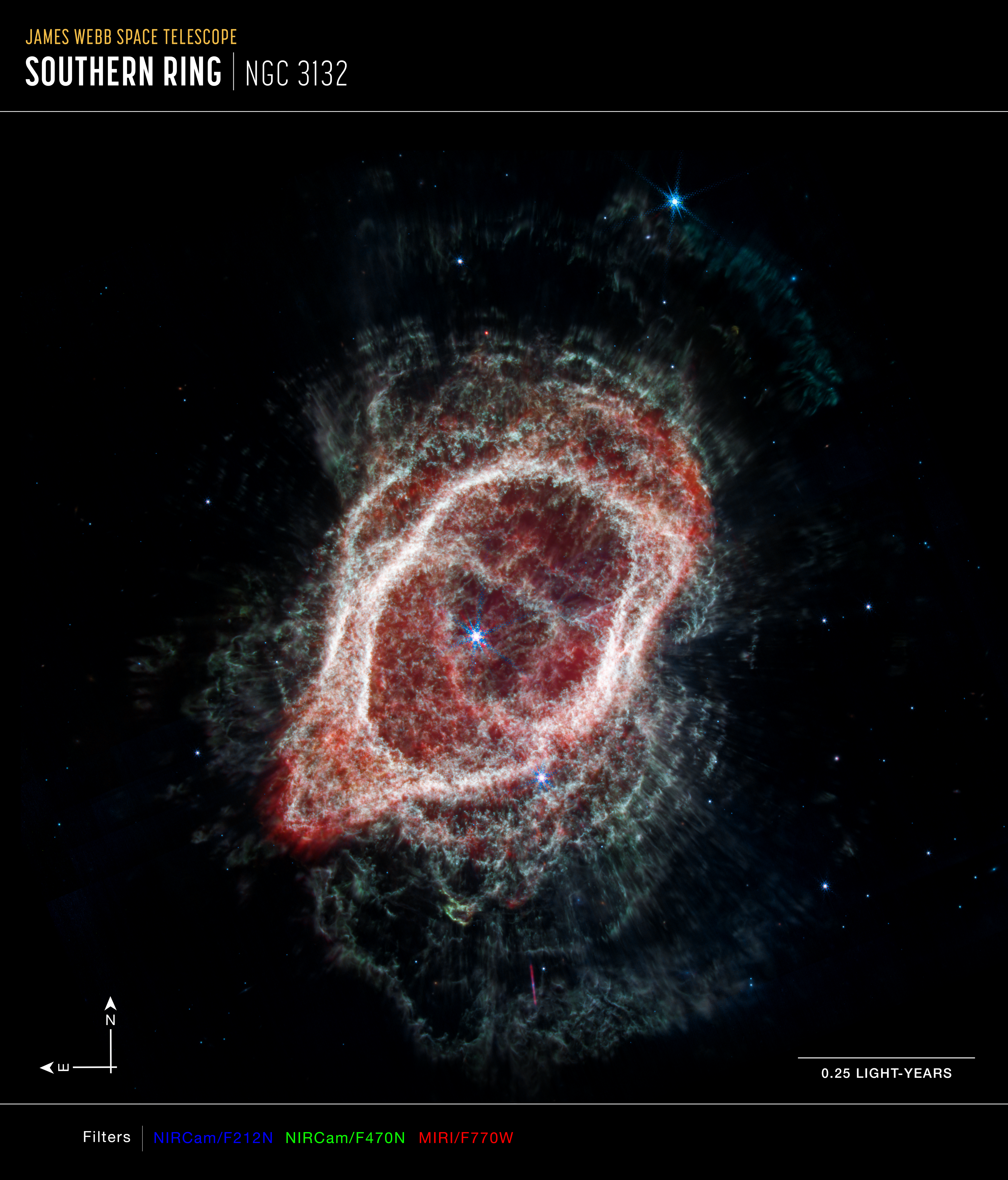
Southern Ring Nebula’s Spokes (NIRCam and MIRI Composite Compass Image)
This image of the Southern Ring Nebula (NGC 3132), captured by Webb’s Near-Infrared Camera (NIRCam) and Mid-Infrared Instrument (MIRI), shows compass arrows, scale bar, and color key for reference. The north and east compass arrows show the orientation of the image on the sky....
Share
Details
Laura Betz
NASA’s Goddard Space Flight Center
Greenbelt, Maryland
laura.e.betz@nasa.gov
NASA, ESA, CSA, STScI, Orsola De Marco (Macquarie University)
Joseph DePasquale (STScI)

